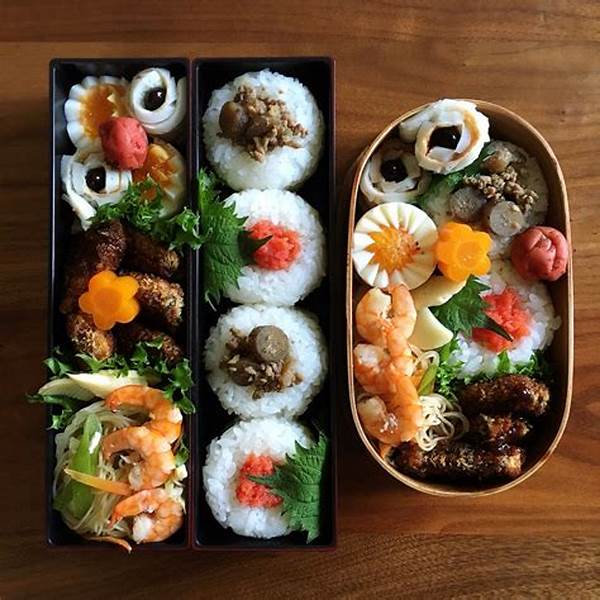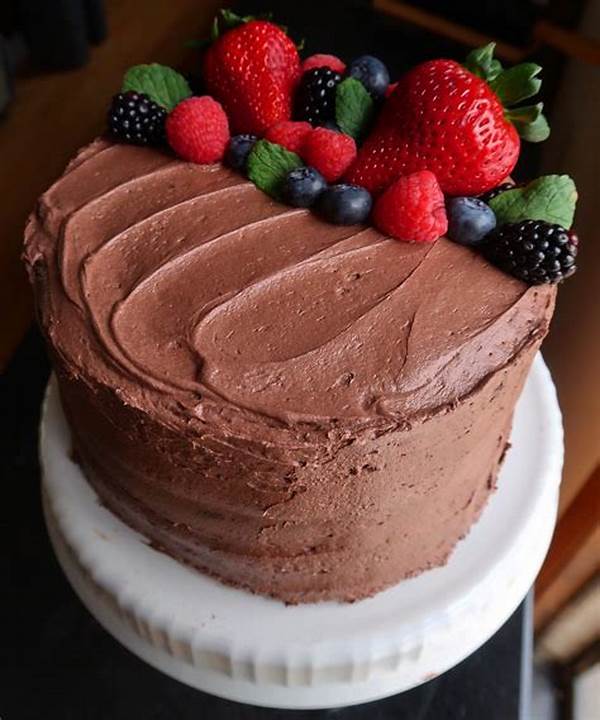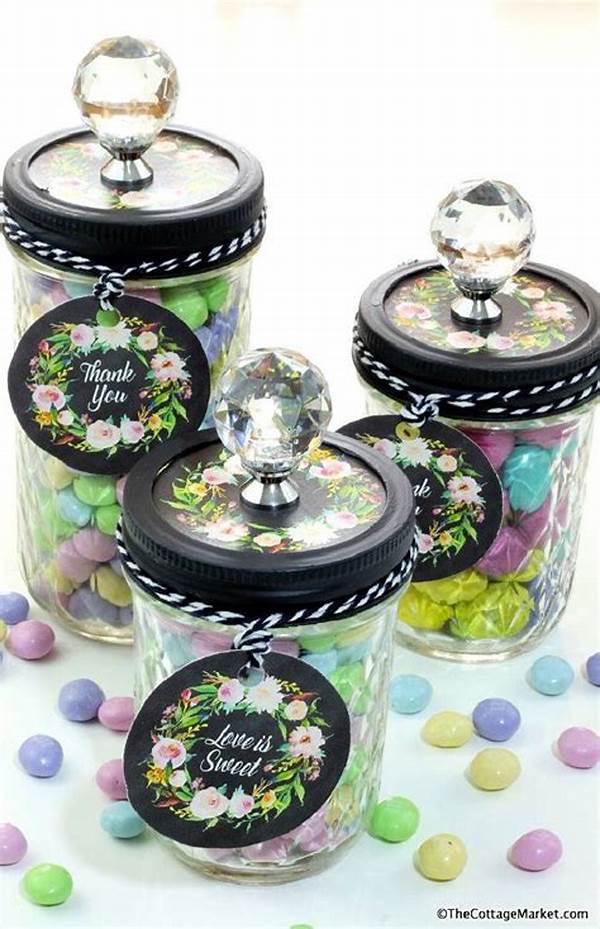Once upon a time, in a small coastal village in Japan, nestled between the emerald mountains and the azure sea, there lived a woman named Aiko. She was known far and wide for her impeccable bento creations. Each morning, the aroma of fresh ingredients wafted through the village as she meticulously prepared her bento boxes for the local school children and workers. Her creative flair and deep understanding of traditional Japanese bento ideas made her a beloved figure in the community.
Read Now : Cooking Gluten-free Meals Effortlessly
A Journey Through Traditional Japanese Bento Creations
Aiko’s bento boxes were more than meals; they were a reflection of her vibrant culture and history. She learned the art from her grandmother, who taught her that each element of a bento box tells a story. The local fish, caught by fishermen at dawn, symbolized freshness and vitality, while the rice, grown in the nearby paddies, was a reminder of the earth’s generosity. Her vegetables, picked from her garden, added a splash of color and nutrition, embodying the balance and harmony of traditional Japanese bento ideas. Each day, as Aiko walked to the village, her baskets brimming with neatly packed bento boxes, she carried not just food, but also a legacy, sharing the rich flavors and stories of her home with everyone.
Every bento was an art piece, intricately layered with love and care. Neatly sliced Japanese omelet, umeboshi plums adding a punch of sourness, and sweet teriyaki chicken lay nestled in a tapestry of textures and flavors. These traditional Japanese bento ideas were more than a culinary delight; they were an embrace of tradition and a celebration of life’s simple joys. As Aiko shared her creations, the villagers cherished each bite, knowing that through her bentos, a piece of their history lived on.
Crafting the Perfect Traditional Japanese Bento
1. Rice First: Aiko always starts with a base of rice, the heart of the bento. White rice, often molded into shapes or topped with sesame seeds, forms the foundation of traditional Japanese bento ideas, providing comfort and sustenance.
2. Colorful Vegetables: Aiko’s bento boxes feature a medley of vibrant vegetables, such as carrots, edamame, and cherry tomatoes. These add color and nutrition, symbolizing the lively spirit of traditional Japanese bento ideas.
3. Protein Variety: From grilled fish to tamagoyaki (Japanese omelet), proteins are crucial in Aiko’s bentos. Each piece is seasoned to perfection, demonstrating the depth of traditional Japanese bento ideas.
4. Pickled Delights: Pickled vegetables like radishes or umeboshi serve as tangy palate cleansers in Aiko’s creations, contributing to the balance that traditional Japanese bento ideas strive for.
5. Seasonal Themes: Depending on the season, Aiko incorporates seasonal ingredients, emphasizing the intimate connection between traditional Japanese bento ideas and the natural world.
Embracing the Tradition with Aiko’s Bentos
As the seasons changed, Aiko would adapt her bento creations to reflect the beauty of each time of year. In spring, her boxes were filled with cherry blossom-shaped radishes and fresh bamboo shoots. Summer brought an abundance of grilled eggplants and fresh cucumbers, cooling the body in the sweltering heat. Aiko’s fall bentos featured vibrant sweet potatoes and earthy mushrooms, while winter highlighted hearty stews and pickled cabbage. Each season brought a new chapter in the story of traditional Japanese bento ideas, a testament to Aiko’s respect for nature’s cycle.
The village children eagerly anticipated lunchtime, where they would gather in the schoolyard under the warm sun. Opening their bentos was always a moment filled with excitement and curiosity. Each layer revealed a surprise, sparking conversations and shared joy. Aiko’s bentos were more than meals; they were expressions of love, tradition, and the comforting embrace of home. Through her dedication, she wove the rich tapestry of traditional Japanese bento ideas into the daily lives of everyone in the village.
The Meaning Behind Aiko’s Bentos
Aiko’s bentos were not merely about food; they were a tapestry of life. Each carefully placed ingredient carried its own story. Sharing these traditional Japanese bento ideas was Aiko’s way of connecting the tapestry of her ancestry to the present generation, ensuring the continuity of tradition.
1. Simplicity and Elegance: Aiko believed in the power of simplicity, where each ingredient shines on its own, a hallmark of traditional Japanese bento ideas.
2. Cultural Identity: Through her bentos, Aiko preserved the cultural identity of her ancestors, imbuing each box with the teachings of generations that came before her.
Read Now : Healthy Plant-based Dinner Recipes
3. Community Connection: Aiko’s bentos became a bridge connecting her community, fostering a shared appreciation for the traditional Japanese bento ideas she passionately upheld.
4. Sustainability Focus: Aiko’s seasonal ingredient choices reflected sustainability, teaching her community to value and respect nature’s bounty, a cornerstone of traditional Japanese bento ideas.
5. Artistic Expression: The delightful presentation of Aiko’s bentos showcased her artistic flair, imbuing the traditional Japanese bento ideas with a modern touch while respecting the past.
Aiko’s Legacy Through Bento
Aiko’s legacy lived on long after her bento-making days were over. Her crafting of these traditional Japanese bento ideas left an indelible mark on the community. Every villager who enjoyed her bentos learned the importance of carrying forward this culinary tradition. Her daughter, Suki, embraced her mother’s teachings, infusing her own bento creations with a modern twist, yet still capturing the heart of traditional Japanese bento ideas.
Suki recalled how her mother, standing in their cozy kitchen, lovingly prepared each component, explaining the tales behind each seasoning and garnish. These moments were a culinary education unlike any other, where Suki absorbed traditional wisdom alongside culinary skill. It wasn’t just about replicating a recipe; it was about honoring a cultural legacy. As she handed down these traditional Japanese bento ideas to her own children, Suki hoped that the essence of her mother’s creativity, love, and respect for tradition would continue to thrive.
And so, the story of traditional Japanese bento ideas unfolded across generations. In a small village in Japan, bentos became more than lunch; they were carriers of history, culture, and familial love, woven together by Aiko and her unwavering dedication to sharing a slice of her heritage, one bento at a time.
The Art of Simplicity in Traditional Japanese Bento
The beauty of traditional Japanese bento ideas lies in their simplicity. Aiko’s art was not just in cooking, but in curating experiences. Selecting ingredients, each vibrant in taste and significance, she told stories of tradition and heritage, creating a harmony of flavors that resonated with anyone who tasted them, be they family or friends.
Each bento was crafted with a deep understanding of flavor and harmony, echoing the seasons’ natural ebbs and flows. Aiko’s skill in balancing simplicity with profound taste was a homage to the generations before her. Through every soft grain of rice and meticulous slice of cucumber, Aiko’s bentos presented a gentle reminder of the intricate beauty found in simple, heartfelt creations.
Legacy and Love: The Heart of Aiko’s Bento
Aiko’s legacy of crafting traditional Japanese bento ideas was more than a culinary practice; it was an act of love. Every bento she prepared was imbued with affection, instilling cultural pride and a sense of belonging in each recipient. Her legacy was continued through Suki, who, through modern interpretations and personal touches, still cherished her mother’s timeless lessons.
These traditional Japanese bento ideas taught generations the value of creativity intertwined with cultural preservation. The stories threaded into her bento boxes connected past and present, reminding each new generation of their shared heritage. Aiko’s influence ensured that the elegance and simplicity of her traditional Japanese bento ideas would forever remain a treasured ritual.




